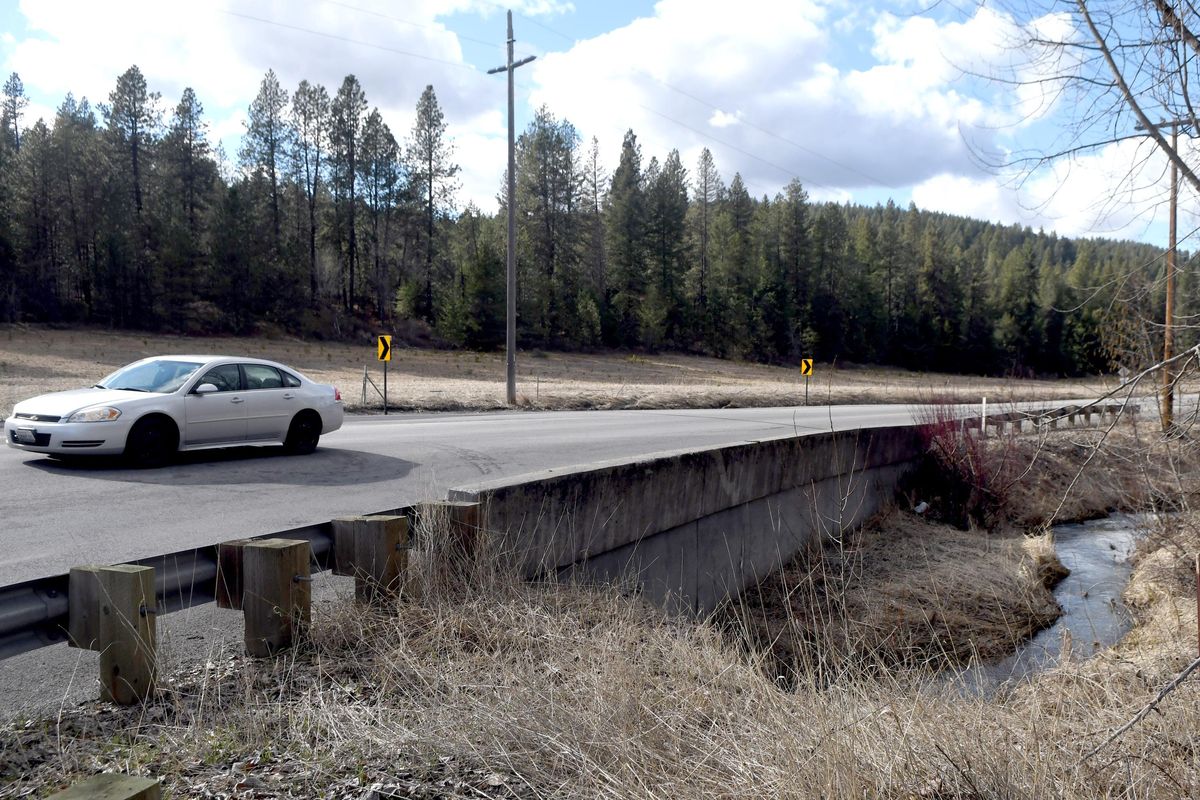Development plans in Spokane Valley draw the ire of Ponderosa neighborhood

When Galen Pavliska purchased a home in the Ponderosa neighborhood of Spokane Valley, he was drawn to the tranquility of the Forest Meadows subdivision, wildlife and views of the forest. He thought it would always remain a residential neighborhood.
But now a proposed multiuse development could be built on a 5-acre parcel right next to his backyard.
Developer Dennis Crapo of Diamond Rock Construction is seeking a zoning change from single family residential to corridor mixed use for the parcel located directly south of the neighborhood.
He plans to develop a project that calls for more than 60 apartment homes and a 15,000-square foot retail use building, according to a traffic study conducted by the city.
“We would not ever assume apartments would be built back there,” Pavliska said. “We don’t think anything should be built out there. Not even a single family home. We like it here. It’s beautiful. Deer go down there.”
The main concern among residents: The parcel of land is located 200 feet south of Chester Creek in a 100-year floodplain.
Crapo subdivided six lots in the area and raised the land elevation in 2010 to remove it off the floodplain. He then sold the land to the current residents, developed homes and used the 5-acre parcel for stormwater drainage.
When Paul Henderson purchased his lot from Crapo, he said he was told there wouldn’t be any additional development in the nearby lot – except for one possible home – because it’s in the floodplain. He’s fine with construction of one house on the land, but an apartment complex would increase the flood threat.
“Everybody I’ve talked to is opposed to it,” he said. “There is not one person (in the neighborhood) who is for it.”
Henderson and several residents spoke against the proposed development at a February planning commission meeting, citing concerns with traffic, a drop in property values and flooding.
They are appealing a favorable environmental review for the proposed development, which will be reviewed by Spokane Valley’s hearing examiner.
Residents are connecting with neighbor Al Merkel to support the appeal of the environmental review.
Merkel’s said the developer lists plans for a zone change and a project on the same application.
“There are in fact multiple proposals here,” he said. “They should be evaluated at the same time.”
A city staff report indicated Crapo’s zoning change request is not consistent with Spokane Valley’s comprehensive plan. The zone was changed from agricultural to single family residential in the 1980s. Most commercial development along Dishman Mica Road occurred north of the Union Pacific tracks, which run parallel to the proposed development.
Corridor mixed use zoning is typically used and intended for major transportation corridors such as Sprague Avenue and north-south arterial roads. It allows for a variety of developments including light manufacturing, office buildings and multifamily development.
Project engineer Todd Whipple of Whipple Consultants said at the planning commission meeting that because there’s mixed use development adjacent to the area, there’s no reason to not develop the property. He said they try to be consistent with land use regulations in the city’s comprehensive plan.
Crapo and Whipple didn’t respond to requests for comment.
Merkel said it doesn’t make sense to have a mixed use development in the middle of the Ponderosa neighborhood.
“Government needs to take initiative to help citizens understand what’s going on. We’re in a crucial moment transitioning from rural to being an actual city,” he said. “This is the time we have to pay attention. It’s time for us as a community to get organized, get involved and paying attention to what’s going on.”
Merkel said he hopes developers will communicate more with their neighborhood before developing land and starting legal proceedings.
“If the citizens are involved and have early input, that buy-in goes a long way in making a development easier by having us all work together as we should as neighbors,” he said.